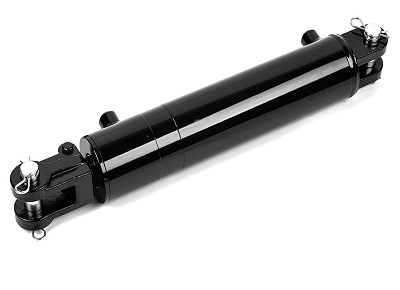As an important piece of equipment in the field of modern engineering, cranes often have to operate in a variety of extreme environments. The hydraulic cylinder, as one of the core components of the crane, has its adaptability in extreme environments directly affecting the crane's stable operation and operational efficiency. In this paper, we will analyse the adaptability of crane hydraulic cylinder in extreme environments from four aspects.
In high-temperature environments, the working temperature of the crane hydraulic cylinder will significantly increase, which may lead to a reduction in fluid viscosity, aging of sealing materials, and decline in metal material strength, among other issues. Therefore, the adaptability of hydraulic cylinders in high-temperature environments is critical. To address the challenge of high temperatures, the design of hydraulic cylinders should incorporate high-temperature-resistant fluids and sealing materials, while optimizing the heat dissipation structure to ensure that the hydraulic cylinder can still work stably under high-temperature conditions.
Contrary to the high-temperature environment, the low-temperature environment also poses a serious challenge to the performance of the crane hydraulic cylinder. In low-temperature conditions, the fluid viscosity increases, leading to poor fluidity, which may result in difficulties starting the hydraulic cylinder, and slow action. Moreover, low temperature may also cause metal material embrittlement, reducing the strength of the hydraulic cylinder. Therefore, in low-temperature environments, low-viscosity fluids with good anti-freezing performance should be used, while strengthening the hydraulic cylinder's preheating and insulation measures to ensure that it can still operate properly in low-temperature conditions.
In high humidity and high salinity environments, hydraulic cylinders are prone to corrosion and rust. Humidity and high salinity can lead to the formation of electrochemical reactions on the metal surface, accelerating the corrosion process. Additionally, moisture can infiltrate the interior of the crane hydraulic cylinder, leading to fluid deterioration and seal failure. Therefore, in these environments, hydraulic cylinders should be made of corrosion-resistant, rust-resistant materials, and the sealing design should be enhanced to prevent moisture and high salinity erosion. At the same time, regular cleaning and maintenance of hydraulic cylinders, and timely replacement of deteriorated fluid, are also key to maintaining their good adaptability.
To address the challenges posed by high humidity and salinity environments, a hydraulic cylinder diagram can play a pivotal role in identifying corrosion-prone areas and optimizing design. When selecting corrosion-resistant materials like stainless steel or coated alloys, a hydraulic cylinder diagram helps engineers visualize component interactions, ensuring enhanced sealing designs (e.g., multi-layered wipers or nitrile seals) are strategically implemented.
In strong vibration and shock environments, the structural stability and sealing performance of the hydraulic cylinder are put to a severe test. Vibration and shock may lead to the crane hydraulic cylinder's connection parts becoming loose, seal breakage, and oil leakage, among other problems. To improve the adaptability of the hydraulic cylinder in this environment, it is necessary to strengthen its structural design and manufacturing process for hydraulic cylinder maker, to ensure that the connection between the components is firm and reliable. At the same time, selecting high-strength, impact-resistant materials and seals is also an important way to improve the hydraulic cylinder's adaptability.
In summary, the adaptability of crane hydraulic cylinders in extreme environments is a complex and crucial issue. To ensure that the hydraulic cylinder can work stably in a variety of extreme environments, comprehensive optimization is necessary from various aspects such as material selection, structural design, manufacturing process, and maintenance. With the continuous advancement of science and technology and the emergence of new materials, it is believed that the adaptability of the crane hydraulic cylinder will be further improved in the future, providing more reliable support for the development of the engineering field.
Furthermore, research on the adaptability of crane hydraulic cylinders in extreme environments should also emphasize strengthening testing and verification in actual applications. Through long-term operation and performance monitoring of hydraulic cylinders in the actual engineering environment, it can more accurately assess their adaptability, providing a strong foundation for subsequent optimization and improvement. At the same time, enhancing communication and cooperation within the industry to share research results and lessons learned is also an important way to promote the continuous development of research on the adaptability of crane hydraulic cylinders.


